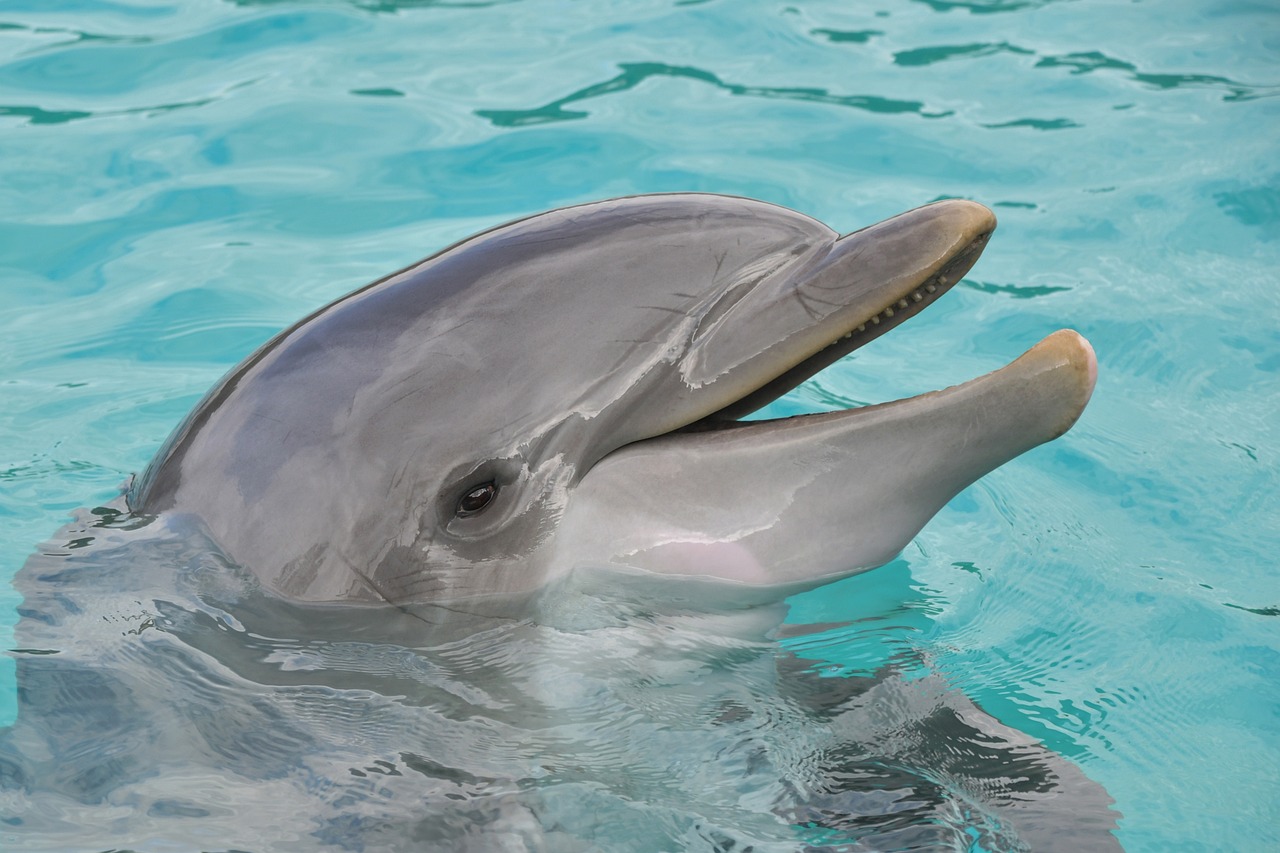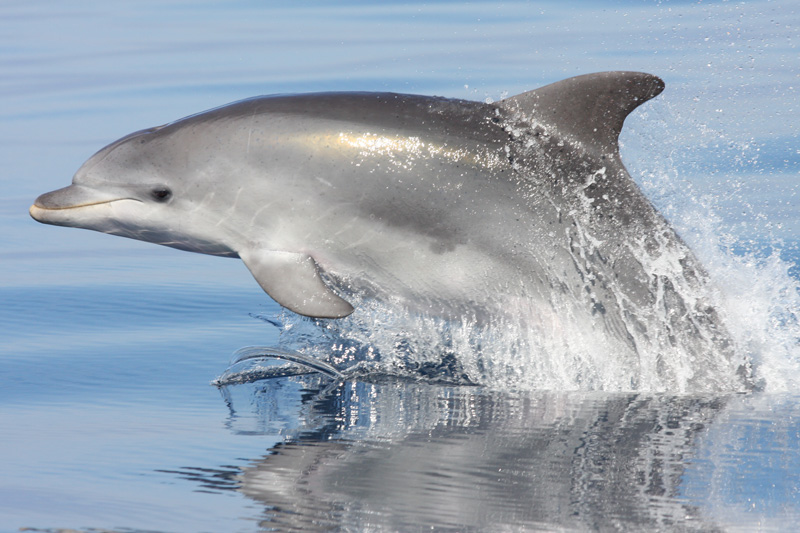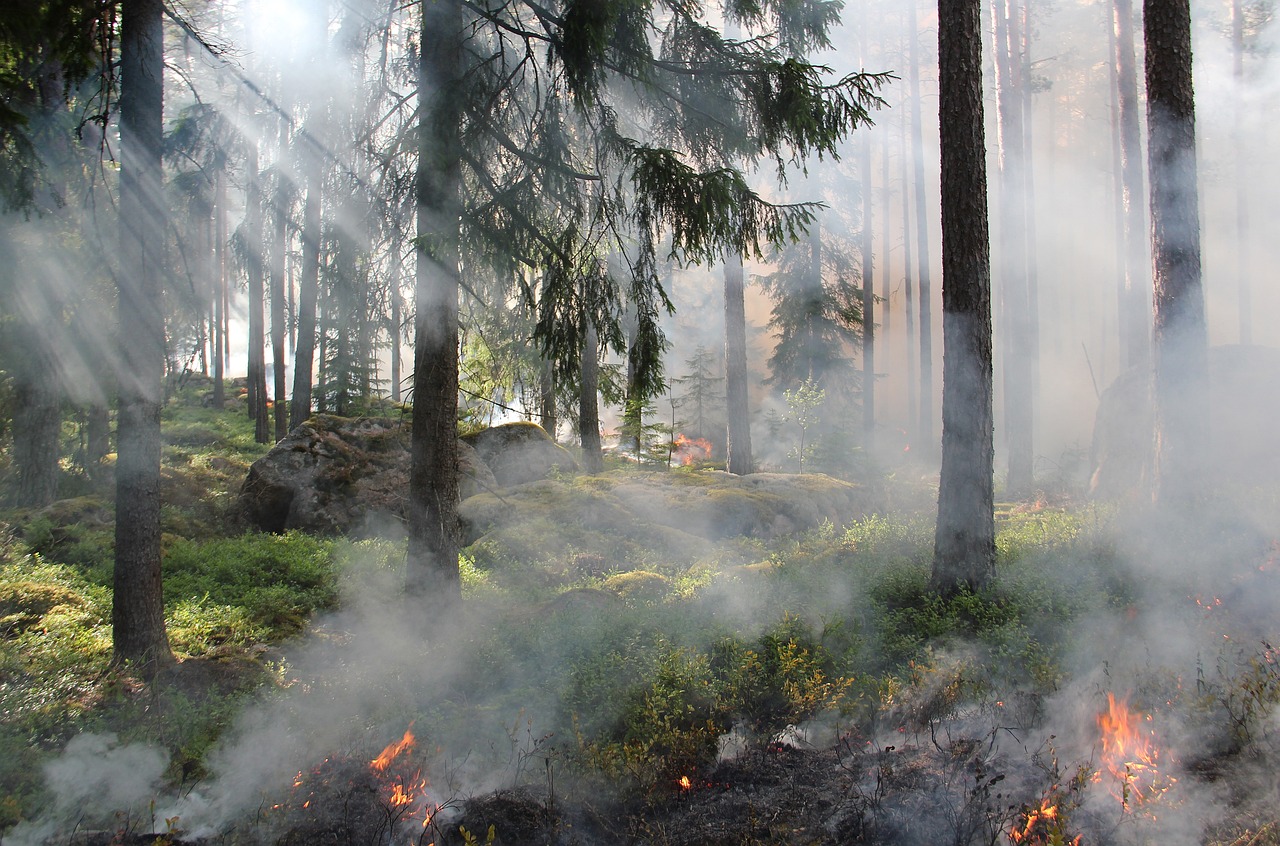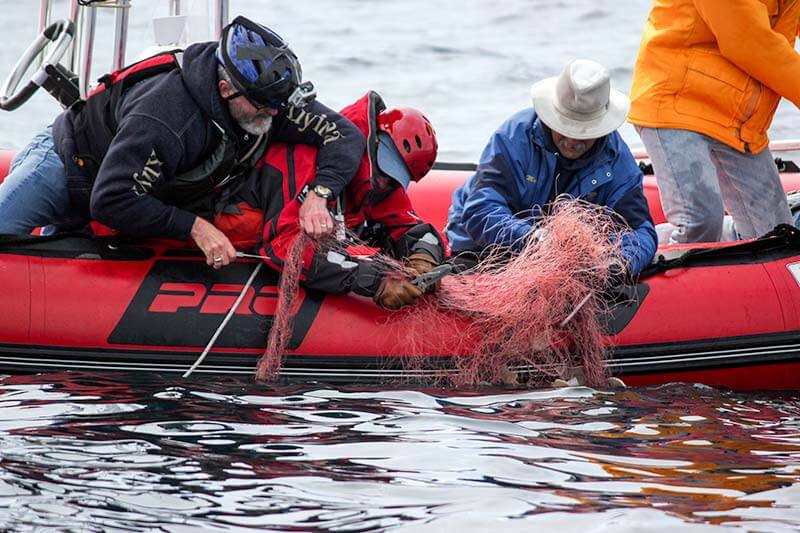Table of Contents
- The vast expanse of the Atlantic Ocean is home to some of the most majestic and enigmatic creatures on Earth
- The Rich Diversity of Atlantic Cetaceans
- Ecosystem Engineers
- Bioindicators
- Complex Social Structures
- Conservation Challenges
- Habitat Loss
- Entanglement
- Climate Change
- Pollution
- Conservation Efforts
- Marine Protected Areas (MPAs)
- Research and Monitoring
- Collaborative Initiatives
The vast expanse of the Atlantic Ocean is home to some of the most majestic and enigmatic creatures on Earth
whales and dolphins. These marine mammals, often referred to as the guardians of the deep, play a crucial role in maintaining the health and balance of the Atlantic’s delicate ecosystems. In this article, we will delve into the fascinating world of these marine giants, exploring their significance, behaviors and the challenges they face in an ever-changing environment.
Whales and dolphins, the enigmatic and majestic marine mammals that roam the Atlantic Ocean, are true sentinels of the deep. Their presence in these vast waters goes beyond their charismatic charm; they are keystone species that exert a profound influence on the health and balance of the entire Atlantic ecosystem. Let’s embark on a journey into the captivating realm of these marine giants, where we’ll uncover their significance, behaviors and the pressing challenges they confront in a world of constant change.
Guardians of the Deep: Often regarded as the guardians of the deep, whales and dolphins occupy vital positions in the Atlantic’s intricate food web. Their roles as apex predators help maintain the balance of marine populations, preventing the unchecked proliferation of certain species and promoting overall ecosystem health.
Migrations and Significance: The migrations of whales, such as humpbacks and gray whales, are epic journeys spanning thousands of miles. These migrations are not only awe-inspiring but also have ecological significance. As these whales transport nutrients from one part of the ocean to another, they support the growth of phytoplankton and other marine life, shaping the very foundation of marine ecosystems.
Cultural and Scientific Interest: Whales and dolphins have fascinated humans for centuries, inspiring art, literature and scientific inquiry. Their complex behaviors, including breaching, singing and cooperative hunting, continue to be subjects of intense study. Understanding their intricate social structures and communication systems provides valuable insights into the natural world.
Tourism and Conservation: Whale watching has become a major global industry, drawing tourists and researchers alike to coastal regions where these marine mammals can be observed in their natural habitat. Responsible whale watching not only educates the public about these animals but also generates economic incentives for their conservation.
Threats and Conservation Challenges: Despite their importance, whales and dolphins face numerous threats in today’s changing world. Collisions with ships, entanglement in fishing gear, habitat degradation and the effects of climate change are pressing challenges. Conservation efforts focus on mitigating these threats and protecting critical habitats.
Cetacean Intelligence: Whales and dolphins are renowned for their intelligence and advanced cognitive abilities. These marine mammals exhibit complex behaviors, problem-solving skills and intricate communication patterns. Studying their intelligence provides valuable insights into the evolution of cognitive abilities in the animal kingdom.
Strategies for Protection: Conservation strategies for whales and dolphins involve a combination of measures, including the establishment of marine protected areas, implementing ship speed limits in areas of high cetacean traffic and promoting sustainable fishing practices. International agreements and cooperation are essential to address global conservation challenges.
In conclusion, whales and dolphins are not merely inhabitants of the Atlantic Ocean; they are integral to the very fabric of its ecosystems. Their presence signifies the health and resilience of these waters, while their behaviors continue to captivate our imaginations and inspire a commitment to conservation. As we delve deeper into the world of these marine giants, we gain a deeper appreciation for the vital role they play in maintaining the balance and beauty of the Atlantic’s delicate environments.
To expand your knowledge on this subject, make sure to read on at this location: 20 Best Sea Books of All Time – BookAuthority

The Rich Diversity of Atlantic Cetaceans
The Atlantic Ocean is teeming with a rich diversity of whales and dolphins, each with its unique characteristics and role in the marine ecosystem. Some of the most well-known species include humpback whales, bottlenose dolphins, orcas and the critically endangered North Atlantic right whales.
The Atlantic Ocean is a mesmerizing realm where the rhythmic movements of waves conceal a world teeming with an astonishing diversity of whales and dolphins, each with its own unique characteristics and vital role in the intricate tapestry of the marine ecosystem. These magnificent creatures are not only awe-inspiring to behold but also crucial indicators of the ocean’s overall health.
Among the most iconic inhabitants of the Atlantic are the humpback whales, renowned for their spectacular acrobatics and haunting songs. These gentle giants embark on epic migrations, traversing thousands of miles between their breeding and feeding grounds. Their presence in the Atlantic is a testament to the interconnectedness of our global oceans, as humpbacks are known to travel between the Northern and Southern Hemispheres, enriching different parts of the Atlantic with their presence.
Bottlenose dolphins, with their playful antics and intelligent social behaviors, are another charismatic species that graces the Atlantic’s waters. They are often seen riding the bow waves of boats, delighting onlookers with their acrobatic displays. These highly adaptable dolphins have a wide range in the Atlantic, from the tropical waters of the Caribbean to the cooler climes of the North Atlantic, demonstrating their remarkable ability to thrive in diverse environments.
Orcas, also known as killer whales, are the apex predators of the Atlantic Ocean. With their distinctive black and white markings and formidable hunting strategies, they are both feared and revered. Orcas exhibit complex social structures and are known to cooperate in hunting, making them one of the ocean’s most intelligent and formidable species. Their presence in the Atlantic is a reminder of the delicate balance of predator-prey relationships that underpin the marine ecosystem.
However, the Atlantic is not without its challenges and the critically endangered North Atlantic right whales symbolize the urgent need for conservation efforts. These majestic giants are among the rarest of all large whale species and their population is in peril due to entanglement in fishing gear, ship strikes and habitat degradation. Efforts to protect and recover the North Atlantic right whales are emblematic of the broader conservation initiatives required to safeguard the Atlantic’s marine treasures.
In essence, the Atlantic Ocean is not just a vast expanse of water; it is a realm of wonder and complexity, where these whales and dolphins play vital roles in maintaining the health and balance of the marine ecosystem. As we continue to explore and appreciate the diversity of life within the Atlantic, we must also commit to their conservation, ensuring that future generations can share in the awe and wonder inspired by these remarkable creatures.
If you’d like to dive deeper into this subject, there’s more to discover on this page: protecting blue corridors | wwf

Ecosystem Engineers
Whales and dolphins are often considered ecosystem engineers. Their activities, such as nutrient cycling and feeding habits, help maintain the balance of the ocean’s food web. For instance, when whales feed at the surface and then dive deep, they transport nutrients from the depths to the surface, enriching surface waters and enhancing productivity.
Whales and dolphins, the majestic denizens of the deep, are not just awe-inspiring creatures but also integral players in the intricate orchestra of marine ecosystems. They hold a special ecological status as “ecosystem engineers” due to the profound impact they exert on their underwater habitats. From nutrient cycling to feeding behaviors, these marine mammals play a vital role in preserving the delicate balance of the ocean’s intricate food web.
One of the most captivating examples of their ecological influence is in nutrient cycling. Whales, especially those of the baleen variety like humpback and gray whales, undertake remarkable migrations that take them from nutrient-rich feeding grounds in colder waters to warmer breeding and calving areas in tropical seas. During their feeding expeditions, they consume enormous quantities of tiny marine organisms, such as krill and small fish, which are rich in nutrients like nitrogen and iron.
As these whales return to warmer waters for breeding and give birth to their calves, they engage in an activity known as “whale pump.” Here’s how it works: Whales release nutrient-rich feces at the surface, where it forms a kind of biological fertilizer that stimulates the growth of phytoplankton, the foundation of the ocean’s food web. Phytoplankton, in turn, serves as a primary food source for zooplankton, which are then consumed by a cascade of marine life, including small fish, squid and ultimately, larger predators. This process enhances the overall productivity of the ecosystem, creating a vibrant and diverse marine environment.
Additionally, the feeding habits of whales and dolphins also help regulate populations of prey species, preventing overpopulation that could disrupt the delicate balance of the food web. By selectively targeting specific prey items, they help maintain healthy ecosystems by preventing the dominance of any one species, which could lead to imbalances and cascading effects throughout the food chain.
Furthermore, the movements of these marine mammals, including their dives to great depths in search of food, contribute to vertical mixing in the ocean. When they return to the surface, they bring with them nutrients from deeper waters. This vertical transport of nutrients helps distribute vital elements like nitrogen, phosphorus and iron, which are essential for phytoplankton growth. The enrichment of surface waters through these processes is crucial for sustaining the base of the marine food web, benefiting everything from small fish to large predators.
In essence, whales and dolphins are not only charismatic megafauna of the ocean but also vital stewards of marine ecosystems. Their activities, from the depths to the surface, have far-reaching effects that ripple through the ocean, promoting biodiversity and ensuring the health of this critical environment. Recognizing their ecological importance underscores the need for conservation efforts to protect these incredible creatures, recognizing that their well-being is intricately linked to the health of the entire oceanic ecosystem.
For a comprehensive look at this subject, we invite you to read more on this dedicated page: 1 Chapter 5: Changing Ocean, Marine Ecosystems, and Dependent …

Bioindicators
The health of these cetacean populations can serve as a barometer for the overall health of the ocean. Changes in their behavior, reproductive success or abundance can signal underlying ecological issues, such as pollution, climate change and overfishing.
Cetaceans, the remarkable group of marine mammals that includes whales, dolphins and porpoises, are not only charismatic and awe-inspiring creatures but also crucial indicators of the ocean’s overall well-being. Their status and behavior offer profound insights into the complex and interconnected dynamics of the marine ecosystem, acting as a sensitive barometer for environmental changes and challenges.
One of the most critical aspects of cetacean health is their reproductive success. These mammals, with their long gestation periods and low reproductive rates, are particularly vulnerable to disruptions in their breeding patterns. Any decline in their reproductive success can be a red flag, indicating that the oceanic environment is facing stressors that are negatively impacting the food chain. Changes in ocean temperature and acidity, for instance, can affect the availability of prey species, making it harder for cetaceans to find the nourishment they need to thrive.
Additionally, the abundance of cetacean populations is a valuable indicator of the overall health of marine ecosystems. When these populations decline, it can suggest a depletion of their primary food sources or an increase in threats such as entanglement in fishing gear or ship strikes. Monitoring the numbers of cetaceans and their distribution can help scientists assess the impact of human activities on the ocean environment and, in turn, guide conservation efforts.
The behavior of cetaceans is another critical aspect to consider. Changes in their behavior patterns, such as alterations in migratory routes or feeding habits, can reflect broader shifts in the marine environment. For example, if whales start to venture into new areas in search of food or avoid traditional breeding grounds, it may indicate shifts in prey distribution due to changing ocean conditions. Understanding these behavioral changes can provide early warning signs of ecological imbalances.
Cetaceans also face numerous direct threats, including pollution, climate change and overfishing. Their large size and long life spans make them particularly susceptible to accumulating pollutants like heavy metals and plastics, which can have devastating health effects on these animals. Additionally, the warming of ocean waters and the resulting shifts in prey distribution can lead to malnutrition and stress among cetacean populations.
Overfishing compounds these issues, depleting the food sources that cetaceans rely on. Fisheries that target the same prey species as cetaceans can inadvertently compete with these marine mammals for resources, leading to food scarcity and population declines.
In conclusion, the health of cetacean populations serves as a vital and sensitive indicator of the overall health of the ocean. By monitoring their behavior, reproductive success and abundance, scientists gain valuable insights into the complex web of ecological changes occurring beneath the waves. By addressing the challenges faced by these magnificent creatures, we can not only protect their populations but also work towards the broader goal of preserving the health and vitality of our oceans for generations to come.
For a comprehensive look at this subject, we invite you to read more on this dedicated page: The Biodiversity of the Mediterranean Sea: Estimates, Patterns, and …

Complex Social Structures
Whales and dolphins are known for their intricate social structures and communication skills. They live in close-knit family groups and pods, displaying remarkable cooperation in hunting, caring for young and even playing. Their complex vocalizations, often referred to as songs, are used for navigation, locating prey and maintaining social bonds.
The world of whales and dolphins is a testament to the remarkable complexity of marine life. Expanding on this idea, let’s dive deeper into their intricate social behaviors and the fascinating ways in which they communicate:
Family Bonds and Social Structures: Whales and dolphins exhibit highly developed social structures. Many species live in tight-knit family groups, where individuals of different ages and generations support one another. These familial bonds are crucial for survival in the challenging marine environment.
Pod Life: Beyond family groups, whales and dolphins form pods, which are larger social units composed of several individuals. Pod members often work together to forage for food, protect one another from predators and navigate through vast ocean expanses. These pods provide a sense of community and shared responsibilities.
Cooperative Hunting: One of the most striking aspects of their social behavior is their cooperative hunting strategies. Whales and dolphins are known to coordinate their movements and efforts when hunting for prey. Some species, like orcas, employ complex tactics to target and capture prey, displaying a level of teamwork that rivals any terrestrial predator.
Mentoring and Learning: Within these social groups, knowledge is passed down from older to younger generations. Young whales and dolphins learn essential life skills, including hunting techniques and navigation, through observation and hands-on experience. This mentoring system ensures the survival and success of the group as a whole.
Playful Interactions: Whales and dolphins are also known for their playful behaviors, which serve important social functions. Play helps strengthen social bonds, build trust and refine coordination skills. It is not uncommon to observe these marine mammals engaged in activities like leaping, surfing on waves and playing with objects.
Vocal Repertoire: Whales and dolphins possess a rich and diverse vocal repertoire. Their vocalizations, often referred to as songs, vary significantly between species. These songs are not just beautiful melodies but also vital means of communication. They convey information about the location of prey, navigation cues and even emotional states.
Long-Distance Communication: Whales and dolphins are capable of long-distance communication through their songs. These vocalizations can travel for miles underwater, enabling individuals to maintain contact with one another even in the vast expanses of the ocean. This long-distance communication is essential for coordinating activities within a pod.
Cultural Differences: Different populations of the same species may have distinct vocal dialects and cultural practices. For example, killer whales in different regions have unique vocal patterns and hunting strategies that are passed down through generations. These cultural differences highlight the complexity of their societies.
Conservation Significance: Understanding the social behaviors and communication of whales and dolphins is not only scientifically fascinating but also crucial for their conservation. Human activities, such as noise pollution and habitat degradation, can disrupt their communication and social structures. Conservation efforts aim to minimize these disruptions and protect their natural behaviors.
In essence, whales and dolphins are extraordinary creatures that exhibit highly developed social behaviors and communication skills. Their complex societies, cooperative interactions and intricate vocalizations are a testament to the wonders of marine life. Studying and protecting these remarkable animals not only enriches our understanding of the ocean but also underscores the importance of preserving their habitats and social bonds for future generations to appreciate and learn from.
If you’d like to dive deeper into this subject, there’s more to discover on this page: Beluga Whale | NOAA Fisheries

Conservation Challenges
Despite their vital role in the marine ecosystem, whales and dolphins in the Atlantic face numerous conservation challenges:
Despite their vital role in the marine ecosystem, whales and dolphins in the Atlantic face numerous conservation challenges: from habitat loss due to human activities such as shipping and coastal development to entanglement in fishing gear, underwater noise pollution and the pressing threat of climate change impacting their food sources and migration patterns.
The very habitats that sustain these magnificent marine creatures are under constant pressure. Urbanization, industrialization and human activities near coastlines have led to habitat degradation and loss. The increase in shipping activities has elevated the risk of collisions between vessels and marine mammals, posing a significant danger to their populations.
Entanglement in fishing gear, often referred to as bycatch, is a pervasive issue affecting marine mammals like whales and dolphins. They can become trapped in fishing nets or lines, leading to injuries, stress or even death. Addressing this problem requires the development and implementation of more sustainable fishing practices, as well as the use of specialized gear designed to minimize entanglement risk.
Underwater noise pollution from various human activities, including shipping, sonar use and drilling, can disrupt the sensitive hearing and communication of marine mammals. This interference can lead to behavioral changes, affect mating calls and result in the stranding of these animals.
Climate change poses an overarching threat to their existence. Rising sea temperatures and altered ocean currents can lead to shifts in the distribution and abundance of prey, impacting the feeding habits and survival of whales and dolphins. Additionally, extreme weather events and changes in sea ice patterns can further exacerbate their challenges.
Conservation efforts aimed at protecting these magnificent creatures involve a multi-faceted approach. This includes establishing marine protected areas to provide safe habitats, implementing regulations to minimize the impact of human activities on their environment, researching their behaviors and habitats to inform better conservation strategies and actively engaging with communities and industries to promote sustainable practices.
By addressing these conservation challenges holistically and with urgency, we can work towards securing the future of whales and dolphins in the Atlantic, ensuring they continue to thrive and play their vital roles in maintaining the balance of our marine ecosystem.
Looking for more insights? You’ll find them right here in our extended coverage: Beluga Whale | NOAA Fisheries

Habitat Loss
Human activities such as coastal development, shipping and offshore drilling have led to habitat degradation and loss. Noise pollution from shipping traffic can disrupt their communication and navigation.
Human activities, such as coastal development, shipping and offshore drilling, have left an indelible mark on our marine environments and their consequences ripple through the delicate web of life beneath the waves. Coastal development often brings with it the dredging of waterways, the construction of harbors and the erection of towering structures that cast shadows over once-pristine shorelines. This transformation of coastal landscapes disrupts the natural flow of water and sediment, altering the very foundations of these ecosystems and eroding their resilience.
The maritime highways carved by shipping vessels connect nations and enable global trade, but they also serve as a conduit for an invisible intruder—noise pollution. The constant rumble of ship engines and the thunderous roar of propellers create a cacophonous symphony beneath the surface. For marine creatures that rely on sound for communication, navigation and even prey detection, this auditory assault is nothing short of a crisis. Whales and dolphins, in particular, depend on their keen sense of hearing for mating calls, finding food and maintaining social bonds. The rising crescendo of noise pollution threatens to drown out their voices, making it increasingly difficult for them to connect, survive and thrive.
Offshore drilling, another human endeavor driven by our insatiable appetite for energy, presents a double-edged sword to marine life. While it provides access to valuable resources, it also poses an ever-present risk of catastrophic spills that can devastate entire ecosystems. These spills not only coat the surface of the ocean but also seep deep into the depths, affecting everything from plankton to the largest predators. The repercussions of such events linger for generations, leaving scars on the environment that serve as painful reminders of our impact.
In light of these challenges, there is an urgent need to rethink our approach to coastal development, shipping and offshore drilling. We must recognize the profound importance of protecting our oceans and the myriad species that call them home. This means adopting sustainable coastal management practices that respect the intricate balance of these ecosystems. It entails developing and enforcing stringent regulations to reduce noise pollution from shipping, including quieter vessel designs and more thoughtful navigation routes.
Furthermore, we must invest in alternative, cleaner sources of energy to reduce our dependence on offshore drilling. Transitioning to renewable energy not only lessens the immediate threats to marine life but also contributes to the long-term health of our planet by mitigating climate change.
In essence, as custodians of our oceans, it falls upon us to strike a harmonious balance between our human activities and the preservation of these precious underwater worlds. By addressing the environmental challenges posed by coastal development, shipping and offshore drilling, we can ensure that the symphony of life beneath the waves continues to play on, undisturbed and resplendent in all its natural wonder.
For additional details, consider exploring the related content available here An Ancient Lost Gene Leaves Whales Vulnerable to Pesticides – The …

Entanglement
Whales and dolphins are at risk of becoming entangled in fishing gear, leading to injury or death. Measures like the use of whale-safe fishing gear are crucial to mitigate this threat.
Whales and dolphins, two majestic and highly intelligent marine species, face a perilous risk in the oceans: becoming entangled in fishing gear. This danger, unfortunately, leads to not only injury but often results in tragic fatalities. It is a pressing concern that demands our immediate attention and concerted efforts to address.
These gentle giants share our planet’s waters and they play vital roles in maintaining the balance of marine ecosystems. However, the unintended consequence of their encounters with fishing gear jeopardizes their very existence. Therefore, it is our responsibility as stewards of the oceans to take proactive measures to protect these magnificent creatures.
One significant step in safeguarding whales and dolphins is the adoption of whale-safe fishing gear. This technology is designed to minimize the risk of entanglement while allowing fishermen to continue their livelihoods sustainably. By using such gear, we can reduce the collateral damage to marine life while also promoting more responsible fishing practices.
Furthermore, education and awareness campaigns can go a long way in ensuring the proper use of whale-safe gear and emphasizing the importance of coexisting harmoniously with these marine animals. Collaboration between scientists, conservationists and the fishing industry is vital to developing and implementing effective solutions that protect both marine life and the livelihoods of those who depend on the sea.
In conclusion, the entanglement of whales and dolphins in fishing gear is a critical issue that demands immediate action. By embracing technologies like whale-safe fishing gear and fostering a sense of responsibility among all stakeholders, we can ensure that these magnificent creatures continue to thrive in our oceans for generations to come.
If you’d like to dive deeper into this subject, there’s more to discover on this page: UK killer whale died with extreme levels of toxic pollutants | Whales …

Climate Change
The changing climate affects the distribution of prey species and alters ocean temperatures. This can impact the availability of food for these marine mammals and disrupt their migratory patterns.
The changing climate, driven primarily by human activities such as the burning of fossil fuels and deforestation, has far-reaching consequences for the delicate balance of marine ecosystems. Beyond affecting the distribution of prey species and ocean temperatures, these climate shifts trigger a cascade of interconnected effects that have profound implications for marine mammals.
Shifts in Prey Distribution: As ocean temperatures rise due to global warming, the distribution of prey species in marine ecosystems undergoes significant changes. Some species may migrate to cooler waters, while others could become more abundant in previously inhospitable regions. For marine mammals like whales, dolphins and seals that rely on specific prey items, these alterations can disrupt their feeding habits. They may need to travel longer distances to find food, expending more energy in the process. This increased effort for hunting can impact their reproductive success and overall health.
Impacts on Reproduction and Survival: The availability of food is closely linked to the reproductive success and survival of marine mammals. Climate-induced shifts in prey distribution can lead to mismatches in the timing of birth and the peak availability of food resources. This mismatch can result in decreased pup survival rates and reproductive failure among species such as seals and sea lions. Additionally, nutrient-poor prey species may not provide the necessary energy for nursing mothers, further jeopardizing the health of offspring.
Altered Migratory Patterns: Many marine mammals are known for their long-distance migratory patterns, which are often synchronized with the seasonal availability of prey. As ocean temperatures and currents change, the timing and routes of these migrations can be disrupted. For example, the warming of Arctic waters can affect the timing of ice melt, impacting the availability of prey in polar regions. This can force marine mammals like polar bears and some seal species to adjust their traditional migration routes or stay in areas with suboptimal conditions, increasing their vulnerability to starvation and predation.
Ocean Acidification: Climate change also contributes to ocean acidification, which can have indirect effects on marine mammals. Changes in pH levels can disrupt the food chain, affecting the abundance and health of prey species. For example, acidification can harm plankton populations, which are a critical food source for many marine mammals, including baleen whales. As the base of the food web weakens, it has a domino effect on the entire ecosystem, making it even more challenging for marine mammals to find adequate nutrition.
Increased Human Interactions: Climate-induced disruptions to marine mammal habitats and food sources can lead to more frequent and intense interactions between these animals and human activities. Struggling to find food, some marine mammals may venture closer to shore, increasing the likelihood of conflicts with fisheries, shipping traffic and coastal development. This can result in more accidental entanglements in fishing gear, ship strikes and habitat degradation, further threatening their populations.
In conclusion, the changing climate has multifaceted and interconnected impacts on marine mammals. It disrupts the availability of their prey, affects their reproductive success and survival rates, alters migratory patterns, contributes to ocean acidification and increases their vulnerability to human interactions. These complex challenges call for urgent and comprehensive efforts to mitigate climate change and protect the fragile ecosystems that marine mammals depend on for their survival.
To expand your knowledge on this subject, make sure to read on at this location: Stories & News – OceanCare

Pollution
The Atlantic Ocean faces challenges from plastic pollution, chemical contaminants and oil spills, which can harm marine life, including whales and dolphins.
The Atlantic Ocean, with its vast and majestic expanse, is not immune to the ecological threats that plague our modern world. Amidst its azure depths and sweeping currents, it grapples with a host of challenges that pose grave risks to its delicate ecosystems and the magnificent creatures that call it home.
1. Plastic Pollution: One of the most pressing concerns is plastic pollution. From discarded single-use plastics to vast patches of floating debris, the Atlantic has become a repository for our society’s plastic waste. This insidious presence harms marine life in numerous ways, from ingestion of microplastics by tiny plankton to entanglement of large marine mammals in abandoned fishing nets. It’s a sobering reminder of the far-reaching consequences of our plastic addiction.
2. Chemical Contaminants: The Atlantic’s waters, though seemingly pristine, are not untouched by chemical contaminants. Industrial runoff, agricultural pesticides and pollutants from shipping and urban areas find their way into the ocean. These chemicals can accumulate in the food chain, affecting not only marine life but also posing potential risks to human health when contaminated seafood reaches our tables.
3. Oil Spills: Oil spills are catastrophic events that can have devastating effects on the Atlantic’s ecosystems. Whether caused by accidents during offshore drilling, tanker collisions or transportation mishaps, oil spills can suffocate marine life, poison habitats and disrupt fragile coastal ecosystems. The scars left by these spills can persist for decades, if not longer.
Despite these formidable challenges, there is hope. The awareness of these issues has spurred global action and cooperation. Governments, environmental organizations and concerned individuals are working tirelessly to address these threats head-on.
1. Cleanup Efforts: Initiatives to remove plastic waste from the ocean, such as beach cleanups and the development of innovative cleanup technologies, are making strides in reducing plastic pollution.
2. Regulations and Protocols: International agreements and regulations are being put in place to curb chemical contamination and reduce the risks of oil spills. Stricter environmental standards and enforcement mechanisms are helping to protect the Atlantic’s fragile ecosystems.
3. Conservation: Conservation organizations are conducting research, advocating for protected marine areas and fostering public awareness to safeguard marine life in the Atlantic.
The challenges faced by the Atlantic Ocean are undeniable, but so too is the resilience of nature and the determination of those committed to its preservation. As we confront the threats of plastic pollution, chemical contaminants and oil spills, we stand at a pivotal moment where collective action and international cooperation can make a difference. By acknowledging these challenges and working together, we can strive to ensure that the Atlantic Ocean remains a thriving, vibrant and resilient ecosystem for generations to come.
For additional details, consider exploring the related content available here If marine noise pollution is bad, deep-sea mining could add to the …

Conservation Efforts
Efforts to protect whales and dolphins in the Atlantic are ongoing:
Efforts to protect whales and dolphins in the Atlantic are ongoing, reflecting our commitment to the preservation of these majestic marine creatures. These initiatives encompass a broad spectrum of actions, each contributing to the overarching goal of ensuring the well-being and survival of these intelligent and ecologically vital species.
Scientific Research: Scientists and marine biologists tirelessly conduct research to better understand the behavior, migration patterns and habitats of whales and dolphins. This knowledge serves as the foundation for effective conservation strategies, helping us identify critical areas for protection and devise targeted plans.
Mitigating Human Impact: The Atlantic is home to extensive shipping lanes and fishing activities, which can pose significant threats to marine mammals through vessel strikes and bycatch. Conservationists work alongside industries to develop and implement measures to reduce these risks, such as speed limits in critical habitats and the use of more whale-friendly fishing gear.
Protected Marine Areas: Establishing marine protected areas (MPAs) is a vital step in safeguarding the habitats of whales and dolphins. These designated zones offer a safe haven where these creatures can feed, breed and thrive without the immediate threat of human interference.
Education and Awareness: Public awareness campaigns and educational programs play a pivotal role in these conservation efforts. By fostering an understanding of the importance of whales and dolphins in marine ecosystems and highlighting the challenges they face, we engage individuals and communities in the cause.
Legislation and Policy: Governments and international organizations work together to enact and enforce legislation aimed at protecting these species. Measures include regulations on hunting, habitat preservation and the implementation of international agreements to coordinate conservation across borders.
Rescue and Rehabilitation: Dedicated organizations and volunteers are on the front lines, rescuing stranded or injured whales and dolphins. Through rehabilitation and release programs, these animals are given a second chance at life in the wild.
Global Collaboration: Whales and dolphins are migratory creatures that traverse vast oceanic distances. Conservation efforts often require international cooperation and agreements to effectively protect them throughout their range.
As we look to the future, the commitment to safeguarding whales and dolphins in the Atlantic remains unwavering. These creatures not only enrich our understanding of marine ecosystems but also serve as ambassadors for the broader conservation of our oceans. By working together, we aspire to ensure their continued presence and the health of the Atlantic’s marine ecosystems for generations to come.
Explore this link for a more extensive examination of the topic: Calls from the deep: do we need to Save the Whales all over again …

Marine Protected Areas (MPAs)
Establishing MPAs helps safeguard critical habitats and provides safe zones for these marine mammals.
Establishing Marine Protected Areas (MPAs) goes beyond safeguarding critical habitats and providing safe zones for marine mammals; it also offers a multitude of benefits for both the marine environment and humanity as a whole.
Preserving Biodiversity: MPAs serve as sanctuaries for a wide array of marine species, not just whales and dolphins. By protecting these areas, we ensure the preservation of entire ecosystems, which in turn supports the biodiversity of the Atlantic Ocean.
Scientific Research: MPAs provide scientists with controlled environments for long-term research. This research helps us better understand marine mammal behavior, migration patterns and their interactions with their surroundings. The knowledge gained can inform more effective conservation strategies.
Economic Value: Healthy oceans, facilitated by MPAs, contribute significantly to the global economy. They support fisheries, tourism and other industries. Moreover, they act as nurseries for fish populations, ultimately benefiting the fishing industry and food security.
Resilience to Climate Change: Climate change is affecting marine environments, making the establishment of MPAs even more critical. These protected areas can serve as refuges where marine life can adapt to changing conditions and, in some cases, act as a buffer against the impacts of climate change.
Educational and Recreational Opportunities: MPAs provide unique opportunities for education and recreation. They serve as living laboratories where people can connect with nature, fostering a sense of stewardship and inspiring future generations to care for the oceans.
Ecosystem Services: MPAs offer ecosystem services that extend beyond their boundaries. They can improve water quality, mitigate coastal erosion and support resilience in the face of natural disasters, benefiting coastal communities.
In conclusion, the establishment of Marine Protected Areas not only protects the habitats and provides safe zones for marine mammals but also contributes to the overall health of the ocean ecosystem, offers valuable research opportunities and has far-reaching economic and ecological benefits. As we recognize the interconnectedness of marine life and human well-being, the importance of preserving these vital areas becomes increasingly evident.
You can also read more about this here: Pacific Remote Islands Marine National Monument | NOAA Fisheries

Research and Monitoring
Scientists conduct research to better understand their behavior, distribution and health, which informs conservation strategies.
Scientists conduct extensive research to gain profound insights into the behavior, distribution and health of various species in the Atlantic. This research is not merely an academic pursuit; it serves as the cornerstone for designing effective and targeted conservation strategies. Here’s how:
1. Behavioral Studies: Observing the behavior of marine creatures, from the migratory patterns of humpback whales to the feeding habits of sea turtles, helps scientists comprehend their life cycles and ecological roles. By understanding these behavioral intricacies, researchers can identify potential threats these species face and tailor conservation measures accordingly. For example, understanding the nesting habits of sea turtles enables the establishment of protected nesting areas to safeguard their vulnerable eggs.
2. Distribution Mapping: Accurate distribution data is crucial for identifying critical habitats and migration corridors. Advanced tracking technologies, such as satellite tags and acoustic receivers, allow scientists to monitor the movements of species like sharks, seals and fish. This knowledge helps create marine protected areas and implement fishing regulations that minimize human impact on these vital regions.
3. Health Assessments: Monitoring the health of marine populations is essential for early detection of issues like pollution, disease outbreaks and climate-related stressors. Researchers collect data on factors such as water quality, disease prevalence and population demographics. For example, coral reef health assessments can reveal the impacts of rising sea temperatures and ocean acidification, guiding strategies to mitigate these threats.
4. Genetic Research: Genetic studies provide insights into the genetic diversity of Atlantic species, which is critical for their resilience in the face of environmental changes. It helps identify genetically unique populations that may require special attention in conservation efforts. For instance, genetic research on Atlantic salmon can inform breeding programs to restore declining populations.
5. Ecosystem Monitoring: Conservation efforts often focus on entire ecosystems, as opposed to individual species. Scientists monitor the overall health of Atlantic ecosystems, including seagrass beds, coral reefs and kelp forests. This holistic approach allows for ecosystem-based management strategies that account for the interconnectedness of species and habitats.
6. Climate Change Impacts: The Atlantic Ocean is not immune to the effects of climate change. Scientists study how rising sea temperatures, ocean acidification and extreme weather events impact Atlantic ecosystems. This knowledge informs conservationists about the most pressing threats and helps develop adaptation and mitigation strategies.
7. Public Awareness: Scientific research also plays a crucial role in raising public awareness about the importance of Atlantic conservation. When people understand the intricate relationships between species and their environments, they are more likely to support policies and actions that protect the Atlantic’s diverse ecosystems.
In summary, the work of scientists in understanding the behavior, distribution and health of Atlantic species is the bedrock upon which effective conservation strategies are built. Their research equips conservationists, policymakers and communities with the knowledge and tools needed to preserve the unique and fragile ecosystems of the Atlantic for generations to come.
Should you desire more in-depth information, it’s available for your perusal on this page: Study confirms that sonar can cause deafness in dolphins

Collaborative Initiatives
International cooperation is essential to address the transboundary nature of ocean conservation. Agreements and organizations work toward shared goals.
International cooperation stands as an imperative cornerstone in addressing the transboundary nature of ocean conservation. The world’s oceans, vast and interconnected, transcend political borders, making it clear that collaborative efforts are crucial in safeguarding their health and vitality. In response to this global challenge, a network of agreements and organizations has emerged, uniting nations in the pursuit of shared goals.
These agreements, often forged through diplomatic negotiations, are a testament to the recognition that ocean conservation is not the responsibility of a single nation but a collective endeavor. They establish a framework for cooperation, defining rules and guidelines that govern the sustainable use and protection of shared marine resources. Examples include regional fisheries management organizations, which oversee the responsible management of fish stocks in specific ocean regions and international conventions like the United Nations Convention on the Law of the Sea (UNCLOS), which sets out the legal framework for the world’s oceans.
Furthermore, organizations dedicated to ocean conservation have proliferated, demonstrating a growing global commitment to this cause. Entities such as the International Union for Conservation of Nature (IUCN), the Intergovernmental Oceanographic Commission (IOC) and the Global Ocean Observing System (GOOS) bring together experts and stakeholders from around the world. They facilitate the exchange of knowledge, promote scientific research and advocate for policies that prioritize the health and sustainability of our oceans.
One of the most prominent examples of international cooperation for ocean conservation is the Paris Agreement, which, while primarily focused on climate change, recognizes the critical role of oceans in regulating the Earth’s climate system. This acknowledgment underscores the interconnectedness of environmental challenges and the need for a holistic approach that transcends national boundaries.
International cooperation extends beyond the realm of policy and agreements. It also encompasses collaborative scientific research and monitoring efforts. Researchers from different countries work together to gather data on ocean ecosystems, track the movement of marine species and study the impacts of climate change. These collective endeavors yield valuable insights that inform conservation strategies and enhance our understanding of the complex dynamics of the oceans.
In an era where environmental threats to the oceans are mounting, from overfishing and plastic pollution to ocean acidification and rising sea levels, international cooperation takes on even greater significance. These global challenges demand a united front, as no single nation can combat them in isolation. Through joint action, the international community can develop and implement effective solutions that protect the oceans for current and future generations.
In conclusion, international cooperation is not just a theoretical ideal but a practical necessity in the realm of ocean conservation. Agreements and organizations provide the structure and framework for nations to work together toward shared goals, fostering a collective commitment to the stewardship of our planet’s most precious resource—the oceans. As we navigate the complex challenges facing our seas, the spirit of collaboration remains our most powerful tool in ensuring a sustainable and thriving future for our global ocean.
Should you desire more in-depth information, it’s available for your perusal on this page: Deep Sea Canyon Rangers, Guardians of Ocean Realms | Clam …

Whales and dolphins of the Atlantic are not only charismatic and awe-inspiring creatures but also essential guardians of the deep. As we continue to study, protect and appreciate these marine mammals, we play a crucial role in preserving the health and biodiversity of the Atlantic Ocean. Their conservation is not just a matter of their survival but also a reflection of our commitment to maintaining the delicate balance of our planet’s oceans.
Guardians of the Deep: Whales and Dolphins in the Atlantic
Whales and dolphins, the magnificent cetaceans of the Atlantic, hold a special place in our hearts. These charismatic and awe-inspiring creatures not only capture our imaginations but also serve as essential guardians of the deep. Their presence is not merely a spectacle; it is a vital thread in the intricate tapestry of marine life. As we embark on a journey to study, protect and appreciate these remarkable marine mammals, we play a role of paramount importance in preserving the health and biodiversity of the Atlantic Ocean. Their conservation is not merely a matter of their survival but also a reflection of our commitment to maintaining the delicate balance of our planet’s oceans.
1. Sentinels of Ocean Health:
- Whales and dolphins are more than just inhabitants of the sea; they are barometers of its health. Their presence or absence can signal changes in the marine environment, alerting us to shifts in temperature, prey availability and the overall state of the ocean ecosystem. By studying their behavior and migration patterns, we gain insights into the well-being of the Atlantic.
2. The Role of Keystone Species:
- Cetaceans, often considered keystone species, exert a disproportionate influence on their ecosystems. They help regulate prey populations, shape the distribution of species and even influence nutrient cycling through their waste. Their presence contributes to the overall health and stability of the Atlantic’s intricate food web.
3. Guardians of Carbon Sequestration:
- Whales, through their activities and migrations, play a significant role in the sequestration of carbon dioxide. Their movements contribute to the mixing of surface and deep waters, aiding in the absorption of carbon from the atmosphere. This helps mitigate the impacts of climate change.
4. Cultural and Ecotourism Value:
- Beyond their ecological significance, whales and dolphins hold immense cultural and ecotourism value. They inspire artists, writers and enthusiasts who flock to coastal regions for whale-watching tours. This ecotourism not only supports local economies but also fosters a deep appreciation for marine conservation.
5. Threats to Their Existence:
- Whales and dolphins face an array of threats in the modern world, from entanglement in fishing gear and habitat degradation to noise pollution and climate change. These challenges underscore the urgency of our commitment to their protection.
6. Conservation Efforts:
- Conservation initiatives are vital to safeguarding the future of these marine mammals. These efforts include protected marine areas, sustainable fishing practices, research on their behavior and measures to reduce ocean pollution. By supporting these endeavors, we actively contribute to their well-being.
7. A Reflection of Our Values:
- The conservation of whales and dolphins extends beyond their intrinsic value; it reflects our commitment to the oceans that sustain life on Earth. It embodies our recognition of the interconnectedness of all species and our responsibility as stewards of the planet.
In closing, the story of whales and dolphins in the Atlantic is a narrative of wonder, responsibility and interconnectedness. These creatures are not just inhabitants of the deep; they are guardians of a fragile ecosystem that sustains life as we know it. As we continue to study, protect and appreciate them, we affirm our commitment to preserving the health and balance of our planet’s oceans. Their survival is not just their responsibility; it is ours as well.
To expand your knowledge on this subject, make sure to read on at this location: Sperm Whale Diet | Scientific Approach
More links
Don’t stop here; you can continue your exploration by following this link for more details: Beluga Whale | NOAA Fisheries
